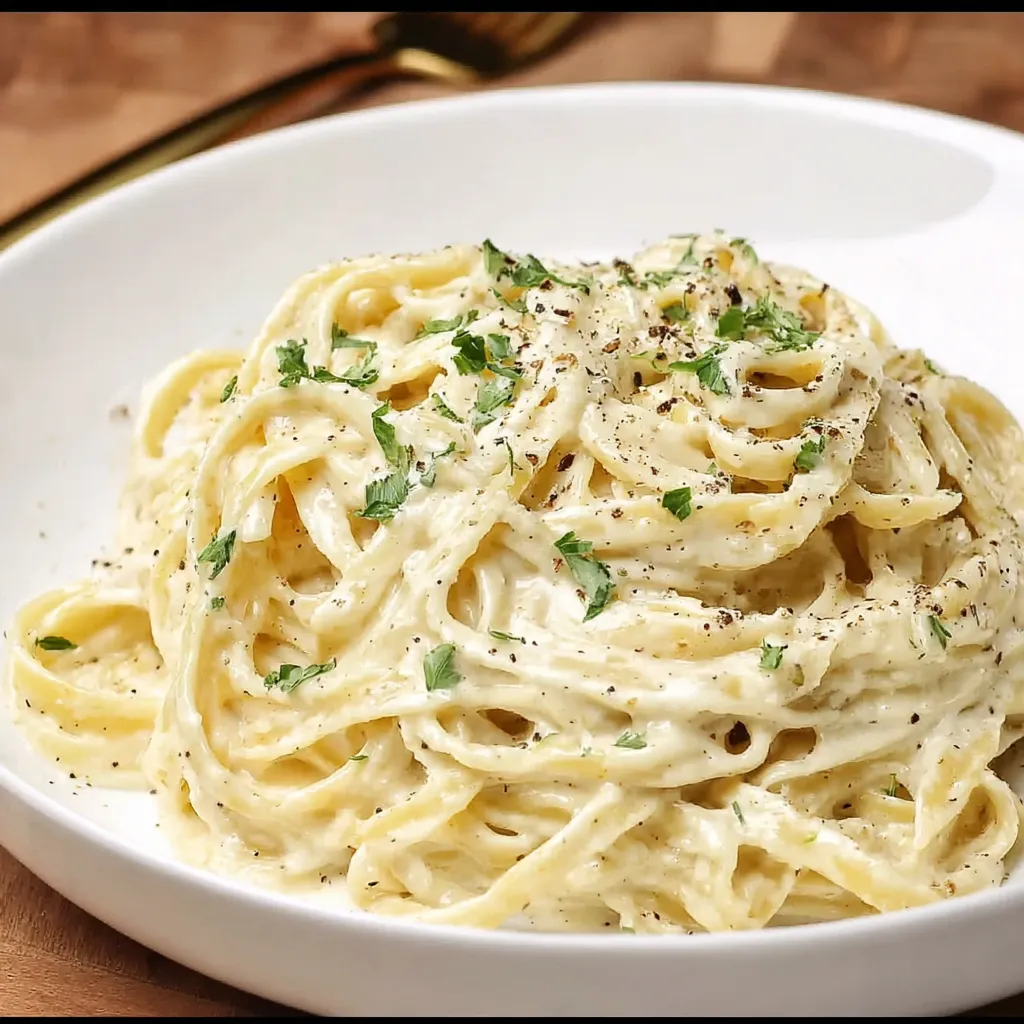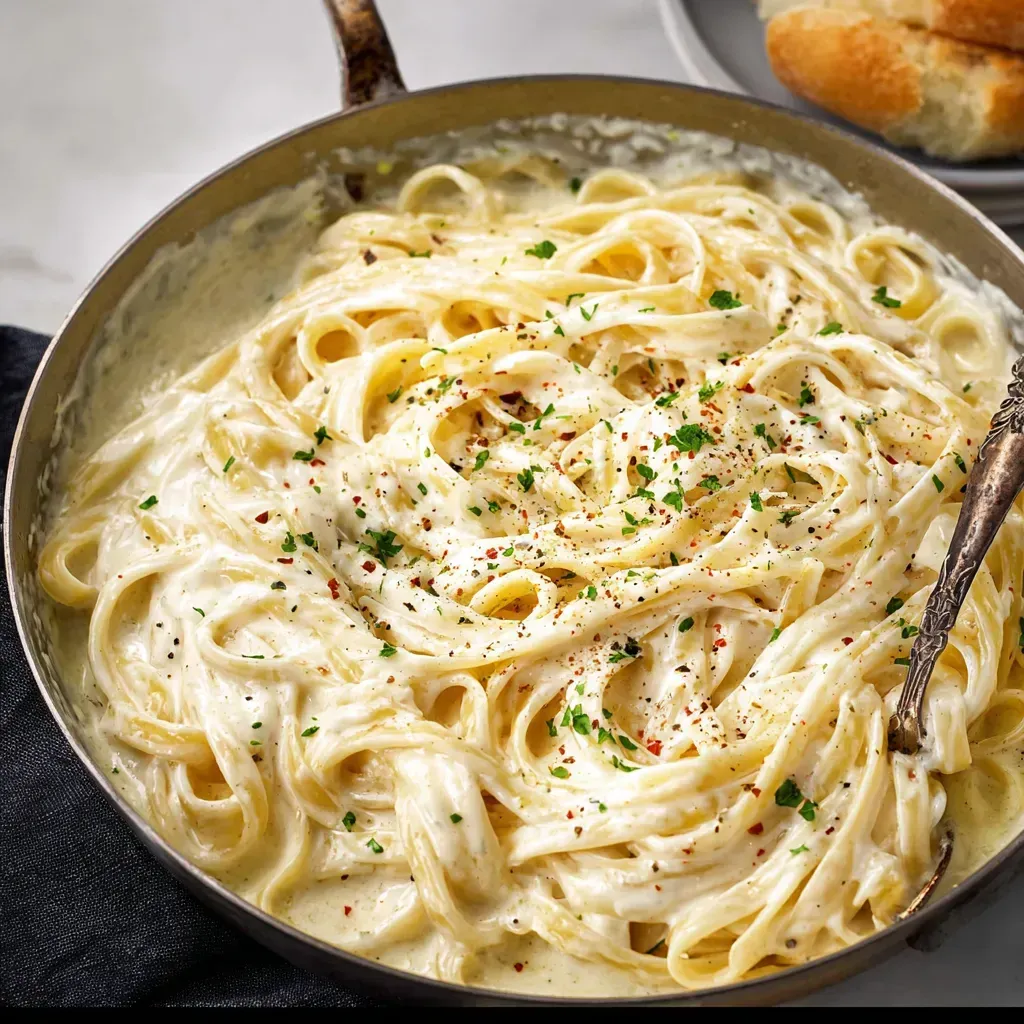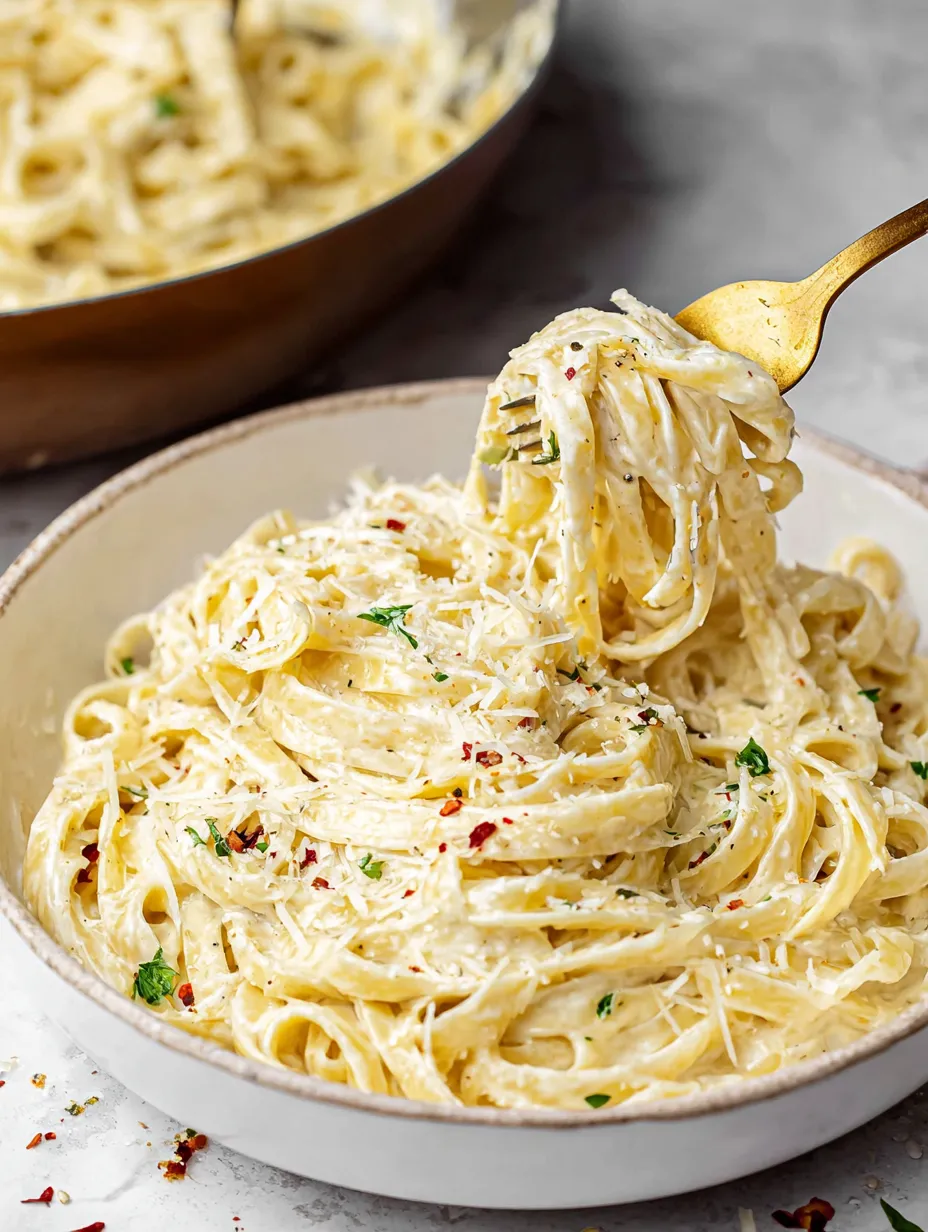 Pin
Pin
This fettuccine alfredo has been my secret weapon for impressing dinner guests while barely breaking a sweat in the kitchen. Silky smooth, rich yet simple, this classic Italian comfort dish relies on quality ingredients rather than complicated techniques to deliver restaurant-worthy results right at your table.
I first made this recipe when trying to recreate a memorable pasta dish from our anniversary dinner in Rome. After several attempts, this version finally captured that authentic creaminess that made my husband declare it better than any restaurant version.
Ingredients
- Fettuccine pasta: Serves as the perfect vehicle for this creamy sauce, its flat, wide shape catching every bit of the velvety coating
- Unsalted butter: Forms the rich foundation of authentic alfredo sauce, providing that signature silky mouthfeel
- Fresh garlic: Adds aromatic depth without overpowering the delicate flavors
- Heavy cream: Creates that luxurious texture that defines a proper alfredo
- Freshly grated Parmesan cheese: Non-negotiable here, pre-shredded varieties contain anti-caking agents that prevent proper melting
- Dried oregano: Introduces a subtle herbal note that balances the richness
- Red pepper flakes: Add just enough warmth to cut through the creaminess
- Reserved pasta water: Contains starch that helps bind the sauce to the pasta
How To Make Fettuccine Alfredo
- Cook the pasta:
- Bring a generously salted pot of water to a rolling boil. Add the fettuccine and cook according to package directions until perfectly al dente, typically 8 to 10 minutes. The pasta should retain a slight firmness when bitten. Before draining, reserve a full cup of the starchy pasta water, which will be your secret weapon for adjusting sauce consistency later.
- Create the base:
- In a large skillet over medium-high heat, melt the butter until it begins to foam but not brown. Add the minced garlic and sauté for exactly 30 seconds, just until fragrant but not browned. Season with salt, pepper, and dried oregano, stirring to incorporate the aromatics evenly throughout the melted butter.
- Develop the sauce:
- Pour in the heavy cream, stirring constantly with a wooden spoon or silicone spatula to prevent scorching. When the mixture comes to a gentle boil, immediately reduce the heat to medium. Continue cooking for 5 minutes, stirring occasionally, allowing the cream to reduce slightly and thicken.
- Add the cheese:
- This is the critical moment. Turn the heat to low and gradually sprinkle in the freshly grated Parmesan cheese while whisking continuously. The low heat prevents the cheese proteins from seizing, ensuring a velvety smooth incorporation. Continue whisking until every speck of cheese has melted and the sauce coats the back of a spoon.
- Combine and finish:
- Add the drained fettuccine directly to the sauce, using tongs to gently toss until every strand is gloriously coated. If the sauce seems too thick, add small splashes of the reserved pasta water until you reach your desired consistency. The starch in the water helps the sauce cling to the pasta beautifully.

Parmesan cheese is truly the heart of this recipe. I discovered the dramatic difference when switching from pre-grated to freshly grated Parmigiano-Reggiano. The authentic aged cheese not only melts better but brings a complex nuttiness that transforms the entire dish from good to unforgettable.
The Art of Perfect Pasta Water
Never underestimate the power of properly salted pasta water. It should taste like seawater, about 1-2 tablespoons of salt per pound of pasta. This seasons the pasta from within as it cooks. The starchy water becomes liquid gold for your sauce, helping emulsify the butter and cream while adding the perfect amount of salinity that brings the whole dish together.
Reheating Without Breaking
Alfredo sauce is notorious for separating when reheated. For leftovers, place in a skillet over low heat and add a splash of heavy cream or milk. Warm slowly, stirring gently but constantly. Never use the microwave, which will cause the fats to separate from the sauce. Patience is key when bringing this dish back to life.
Variations To Try
Authentic fettuccine alfredo is beautifully minimalist, but it also provides a perfect canvas for additions. Grilled chicken breast adds protein and makes the dish more substantial. Sautéed mushrooms introduce earthy depth. Spinach wilted into the hot sauce adds color and nutrition. For seafood lovers, jumbo shrimp or even lobster transforms this into a special occasion meal.

Why Real Ingredients Matter
The beauty of authentic fettuccine alfredo lies in its simplicity. Unlike jarred sauces filled with stabilizers and preservatives, this homemade version lets the natural richness of cream, butter and cheese create a sauce that's simultaneously lighter and more satisfying. The minimal ingredient list means each component must shine. Splurge on genuine Parmigiano-Reggiano if possible, use European-style butter for its higher fat content, and never substitute half-and-half for the heavy cream.
Recipe FAQs
- → What type of Parmesan cheese works best?
Freshly grated Parmesan cheese is ideal as it melts smoothly and enhances the dish's texture and flavor. Pre-shredded cheese may clump and result in a grainy sauce.
- → Can I add protein to the dish?
Yes! Add cooked proteins like grilled chicken, shrimp, salmon, or crispy bacon for extra flavor and texture. Prepare them separately and toss them in at the end.
- → How can I adjust the sauce consistency?
If the sauce feels too thick, add a splash of reserved pasta water or warm cream. This helps to loosen the sauce and integrate it more evenly with the pasta.
- → How do I prevent the sauce from becoming grainy?
Keep the heat low, especially when adding the Parmesan cheese. High heat can cause the cheese to break down and create an unpleasant texture.
- → What can I garnish the dish with?
Garnish with additional Parmesan cheese, a pinch of red pepper flakes for mild heat, or fresh herbs like parsley for a burst of color and flavor.
